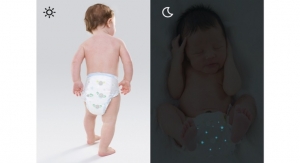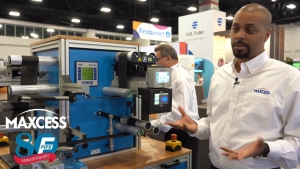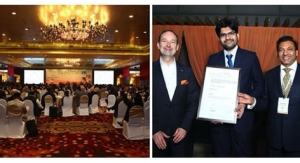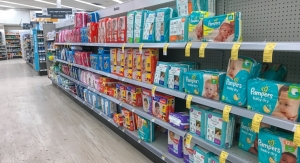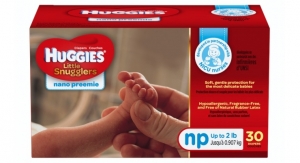Raymond Chimhandamba, Handas Consulting (Africa Market Specialist), Johannesburg, South Africa07.11.19
Consider these two real life scenarios from the consumer industry. A business that manufactures matches was going through tough times. When I say matches in this case I am referring to the good old match boxes… Otherwise the example won’t work. Make sure your imagination is set on the right channel. The match company was experiencing financial challenges. So you can imagine they needed to reduce costs wherever they could. So the manager got the team together and started brainstorming and throwing ideas around. One of the factory team members suggested, “The match box has two sides for striking the match. But a lot of times, the whole box of match sticks is finished but neither side is completely used up. If we made the boxes in such a way that you could only use one side to strike a match, we would cut the use of the raw material by half.” It was a good idea. And it worked.
Simplicity in Innovation
Let me get back to where I started. Work with me. I am just setting the stage here. I am still coming to the innovation part. Don’t steal my thunder. So I believed that there was a gap in the market for well-priced quality diapers. I even had the pay off line in my mind. Comfort for the baby. Value for mothers. I believe I have seen that pay off line about a year ago for a North African brand. Another reminder that there are very few ideas that you can think of today that one of the other 7 billion people on the planet have not thought of.
Innovation doesn’t have to be anything complicated in order to be effective. So let me share with you a few practical innovations that I went though, in real life. So here I was, with this big hairy audacious goal of starting my own business, based on the gap that I had identified above. I wanted to build this diaper empire that would start in Southern/Central Africa and would spread to the rest of the continent. I started off in the right place, like most businesses. I was unhappy about something and I wanted to solve the problem and get paid for solving it. I was unhappy about the quality of diapers that the market was offering, outside the big brands, Pampers and Huggies. I believed that I could make my contribution to improve the market and get paid for it. I chose a smaller market where the problem of quality was even worse.
And I also thought that being a smaller market I would make my impact quicker, pick up the lessons and apply them to a bigger market. So I started in Zimbabwe. I started off by buying a mixture of A and B grades of Molfix from SA and exporting it to Zimbabwe. For Molfix the absorbency was the big seller and the value proposition. Occasionally I would get A and B grades Fitti. For Fitti it was the softness that the consumer fell in love with.
After a time we were ready to do better and offer the market A grade quality. Now I scoured the globe for a good product that was well priced. That’s when we started selling Mamy Poko, made in India. And we got Mamy Poko to other parts of the Africa region too. Kenya did the best with the brand in the region. Now to the innovation. After what I had learned about Mamy Poko, I had a hunch that pull ups in all sizes would be a good differentiator in this cluttered market. I want you to imagine the other challenges in this market. There is no local currency. Yes. Zero. Hands up anyone who has worked in a market that does not have its own currency. No one. I thought so. I went there and you see this scar…. Don’t stress I got a T-shirt instead.
But don’t worry, I got this, I told myself. We will take off. This is going to work. So the market was using U.S. dollars and had stopped using the Zimbabwe altogether. So how do we give change in a market that uses U.S. dollars and there are no coins. Now try not to laugh. If you bought something for $3.50, and you have a $5 note, your change was therefore $1 (in notes) and ZAR5.00 (in coins). So yes, a mixture of U.S. dollars and South African Rand coins. Now this is the point where I confess that this innovation wasn’t my invention. No I am not that good! I did not invent this one. The market did. So, anyway, we had to find a way to fit into this market. To get around the big challenge of giving change, the market had two innovative ideas for two different channels.
Modern trade would give sweets for the part that required coins. The informal channel decided to use the magic of the dollar price point. I use the word magic because it literally was. Everything worked off the $1 price point. It was just a question of how many items you would get for $1. So anything that should cost 70 cents on its own cost you a dollar. Now the stage is set. Let me come back to diapers. For our space, the diaper category, the prices ranged from $1-10 for the cheap and nasty diapers that really only worked and did the job that it was supposed to do only half the time. It was a hit and miss. Our magic price point for our lowest offering was $1 for three. As you would imagine, the mothers would challenge us why we would possibly imagine this was okay to charge this price in a market where they could buy ten for just one dollar. And this is the part we cherished. And this is the opportunity that we would grab with both hands and we did our magic. We would prove to them that with our product, you would not stress and you would never have to worry about your child being wet or even feeling wet until the point they did number two. We would demonstrate that our diaper could take 1 liter of water, gain weight, but remain dry. And for simplicity, we would have a 2 liter Coke PET bottle, and we would pour up to halfway into the diaper. Give it a few seconds and it would completely dry. And on cue…we would wait for the wow comment. And that is why we charge $1 for three. And we also soon learned that the mother who was using the cheap and nasty diaper was a lot easier to convince to buy our product than the mother who was still on cloth diapers. So yes, we learned that the cheap and nasty diapers were not an enemy. And we embraced them. They were a category partner. They did the groundwork for us. They swept the path to that great diaper utopia that we were headed to.
Using Simple Mobile Tech to Build Your Database
So when a shop accepted to list us, particularly the independents, we would assure them that we would support our brand by doing in-store activations within the first three weeks of listing. The model was very simple and allowed for a control system at the same time. In exchange for their phone number we would give mothers a single diaper to go and try. Individually wrapped single diaper in Mamy Poko colors. One of the real innovations on Unicharm’s part I may add. The individually wrapped single diaper worked really well during promotions. We would tell the new potential customer what our diaper can do, show them by running the demo above and then give them a sample to go and try this at home. So with a one-by-one meter board that can be set up on top of a simple foldable contraption that works like a foldable ironing board, you can set up in seconds. And when it is time to dismantle, you can do the same in just as short a time. Cover the “table top” with a cloth in your brand colors and you can store your stock underneath neatly without it looking untidy. Again, if the board was looking a bit scratched and ugly, no one would see that if it was covered. Worked like a charm.
So by simply showing the recon of “used” diapers for the demo versus opening stock, and number of diapers issued against phone numbers received, each team member would be able to account for the stock to their supervisor at the end of the day. Because the contraptions and boards were easy to fold and put away in the boot, (I know our American friends would say trunk), one supervisor could drop off four teams to their destinations and collect them at end of day. I say that to make it sound like we were a big operation, but five times out of 10 that supervisor was me! If you wanted to cover more ground, the same four teams can be picked up during lunch time to be dropped off at the second venue, so that way you actually cover eight outlets with just one team of four. And to be honest if you really wanted to push it and you have outlets that close late, then this team of four would cover three outlets in one day each and finish a bit later. It doesn’t sound as strenuous but it means you cover 12 outlets in one day with just one team of four people.
A bit more detail about the activations themselves. If a mother is carrying a baby there is your cue. So maybe the baby is not here and you can see the diapers in her basket, there is your cue. She will tell precisely what size her baby is. The other big lesson we learned is that between Molfix, Fitti and Mamy Poko, brands that we worked with on our journey to higher level of diaper understanding, the size numbers do not always correspond well, so it is best to go with the weight of the baby rather than size numbers. And mothers fortunately are pretty good at keeping track of that.
Simple Innovation to Show Differentiation
So here is the thing. You have a brand that has a very good value proposition and also one key point of differentiation. The brand is totally new in the market. How do you get that message across to the consumer? On a good day, where the budget is available, the answer can be quite simple. Any marketer would tell you that you run a campaign that highlights these attributes. The longer you run the campaign, the wider the audience that you will reach, and the wider the number of platforms you run your campaign (from radio, TV, Twitter, Facebook, billboards and anywhere else), the more people you will reach. Life can be good when you have budget, for people and companies alike. When you are a business, have a new brand and you have no budget, what do you do?
Allow me some space to digress one more time. I have never been able to prove this point though. But maybe if some of your colleagues have worked for Red Bull you can perhaps get back to me and confirm or disprove this urban legend once and for all. I was told, at some point in my now very long career, that when Red Bull started using the cartoons in their “Red Bull gives you wiiings” campaigns, in the early days when they launched, the reason they used cartoons is because they did not have the big marketing budgets they have today. The cartoon characters campaign was of course so successful and ran for so long that the they became iconic and very much part of the whole Red Bull iconic narrative that even when they now have the big budgets, they will continue to use the cartoons. It is now an important part of the whole Red Bull narrative that it will continue, aside any other new advertising innovations. The point I am sharing this is because I want to talk about what I did when I did not have budget and I wanted to say that my brand is pull ups in all sizes. That was my point of differentiation.
Simplicity in Innovation
Let me get back to where I started. Work with me. I am just setting the stage here. I am still coming to the innovation part. Don’t steal my thunder. So I believed that there was a gap in the market for well-priced quality diapers. I even had the pay off line in my mind. Comfort for the baby. Value for mothers. I believe I have seen that pay off line about a year ago for a North African brand. Another reminder that there are very few ideas that you can think of today that one of the other 7 billion people on the planet have not thought of.
Innovation doesn’t have to be anything complicated in order to be effective. So let me share with you a few practical innovations that I went though, in real life. So here I was, with this big hairy audacious goal of starting my own business, based on the gap that I had identified above. I wanted to build this diaper empire that would start in Southern/Central Africa and would spread to the rest of the continent. I started off in the right place, like most businesses. I was unhappy about something and I wanted to solve the problem and get paid for solving it. I was unhappy about the quality of diapers that the market was offering, outside the big brands, Pampers and Huggies. I believed that I could make my contribution to improve the market and get paid for it. I chose a smaller market where the problem of quality was even worse.
And I also thought that being a smaller market I would make my impact quicker, pick up the lessons and apply them to a bigger market. So I started in Zimbabwe. I started off by buying a mixture of A and B grades of Molfix from SA and exporting it to Zimbabwe. For Molfix the absorbency was the big seller and the value proposition. Occasionally I would get A and B grades Fitti. For Fitti it was the softness that the consumer fell in love with.
After a time we were ready to do better and offer the market A grade quality. Now I scoured the globe for a good product that was well priced. That’s when we started selling Mamy Poko, made in India. And we got Mamy Poko to other parts of the Africa region too. Kenya did the best with the brand in the region. Now to the innovation. After what I had learned about Mamy Poko, I had a hunch that pull ups in all sizes would be a good differentiator in this cluttered market. I want you to imagine the other challenges in this market. There is no local currency. Yes. Zero. Hands up anyone who has worked in a market that does not have its own currency. No one. I thought so. I went there and you see this scar…. Don’t stress I got a T-shirt instead.
But don’t worry, I got this, I told myself. We will take off. This is going to work. So the market was using U.S. dollars and had stopped using the Zimbabwe altogether. So how do we give change in a market that uses U.S. dollars and there are no coins. Now try not to laugh. If you bought something for $3.50, and you have a $5 note, your change was therefore $1 (in notes) and ZAR5.00 (in coins). So yes, a mixture of U.S. dollars and South African Rand coins. Now this is the point where I confess that this innovation wasn’t my invention. No I am not that good! I did not invent this one. The market did. So, anyway, we had to find a way to fit into this market. To get around the big challenge of giving change, the market had two innovative ideas for two different channels.
Modern trade would give sweets for the part that required coins. The informal channel decided to use the magic of the dollar price point. I use the word magic because it literally was. Everything worked off the $1 price point. It was just a question of how many items you would get for $1. So anything that should cost 70 cents on its own cost you a dollar. Now the stage is set. Let me come back to diapers. For our space, the diaper category, the prices ranged from $1-10 for the cheap and nasty diapers that really only worked and did the job that it was supposed to do only half the time. It was a hit and miss. Our magic price point for our lowest offering was $1 for three. As you would imagine, the mothers would challenge us why we would possibly imagine this was okay to charge this price in a market where they could buy ten for just one dollar. And this is the part we cherished. And this is the opportunity that we would grab with both hands and we did our magic. We would prove to them that with our product, you would not stress and you would never have to worry about your child being wet or even feeling wet until the point they did number two. We would demonstrate that our diaper could take 1 liter of water, gain weight, but remain dry. And for simplicity, we would have a 2 liter Coke PET bottle, and we would pour up to halfway into the diaper. Give it a few seconds and it would completely dry. And on cue…we would wait for the wow comment. And that is why we charge $1 for three. And we also soon learned that the mother who was using the cheap and nasty diaper was a lot easier to convince to buy our product than the mother who was still on cloth diapers. So yes, we learned that the cheap and nasty diapers were not an enemy. And we embraced them. They were a category partner. They did the groundwork for us. They swept the path to that great diaper utopia that we were headed to.
Using Simple Mobile Tech to Build Your Database
So when a shop accepted to list us, particularly the independents, we would assure them that we would support our brand by doing in-store activations within the first three weeks of listing. The model was very simple and allowed for a control system at the same time. In exchange for their phone number we would give mothers a single diaper to go and try. Individually wrapped single diaper in Mamy Poko colors. One of the real innovations on Unicharm’s part I may add. The individually wrapped single diaper worked really well during promotions. We would tell the new potential customer what our diaper can do, show them by running the demo above and then give them a sample to go and try this at home. So with a one-by-one meter board that can be set up on top of a simple foldable contraption that works like a foldable ironing board, you can set up in seconds. And when it is time to dismantle, you can do the same in just as short a time. Cover the “table top” with a cloth in your brand colors and you can store your stock underneath neatly without it looking untidy. Again, if the board was looking a bit scratched and ugly, no one would see that if it was covered. Worked like a charm.
So by simply showing the recon of “used” diapers for the demo versus opening stock, and number of diapers issued against phone numbers received, each team member would be able to account for the stock to their supervisor at the end of the day. Because the contraptions and boards were easy to fold and put away in the boot, (I know our American friends would say trunk), one supervisor could drop off four teams to their destinations and collect them at end of day. I say that to make it sound like we were a big operation, but five times out of 10 that supervisor was me! If you wanted to cover more ground, the same four teams can be picked up during lunch time to be dropped off at the second venue, so that way you actually cover eight outlets with just one team of four. And to be honest if you really wanted to push it and you have outlets that close late, then this team of four would cover three outlets in one day each and finish a bit later. It doesn’t sound as strenuous but it means you cover 12 outlets in one day with just one team of four people.
A bit more detail about the activations themselves. If a mother is carrying a baby there is your cue. So maybe the baby is not here and you can see the diapers in her basket, there is your cue. She will tell precisely what size her baby is. The other big lesson we learned is that between Molfix, Fitti and Mamy Poko, brands that we worked with on our journey to higher level of diaper understanding, the size numbers do not always correspond well, so it is best to go with the weight of the baby rather than size numbers. And mothers fortunately are pretty good at keeping track of that.
Simple Innovation to Show Differentiation
So here is the thing. You have a brand that has a very good value proposition and also one key point of differentiation. The brand is totally new in the market. How do you get that message across to the consumer? On a good day, where the budget is available, the answer can be quite simple. Any marketer would tell you that you run a campaign that highlights these attributes. The longer you run the campaign, the wider the audience that you will reach, and the wider the number of platforms you run your campaign (from radio, TV, Twitter, Facebook, billboards and anywhere else), the more people you will reach. Life can be good when you have budget, for people and companies alike. When you are a business, have a new brand and you have no budget, what do you do?
Allow me some space to digress one more time. I have never been able to prove this point though. But maybe if some of your colleagues have worked for Red Bull you can perhaps get back to me and confirm or disprove this urban legend once and for all. I was told, at some point in my now very long career, that when Red Bull started using the cartoons in their “Red Bull gives you wiiings” campaigns, in the early days when they launched, the reason they used cartoons is because they did not have the big marketing budgets they have today. The cartoon characters campaign was of course so successful and ran for so long that the they became iconic and very much part of the whole Red Bull iconic narrative that even when they now have the big budgets, they will continue to use the cartoons. It is now an important part of the whole Red Bull narrative that it will continue, aside any other new advertising innovations. The point I am sharing this is because I want to talk about what I did when I did not have budget and I wanted to say that my brand is pull ups in all sizes. That was my point of differentiation.


